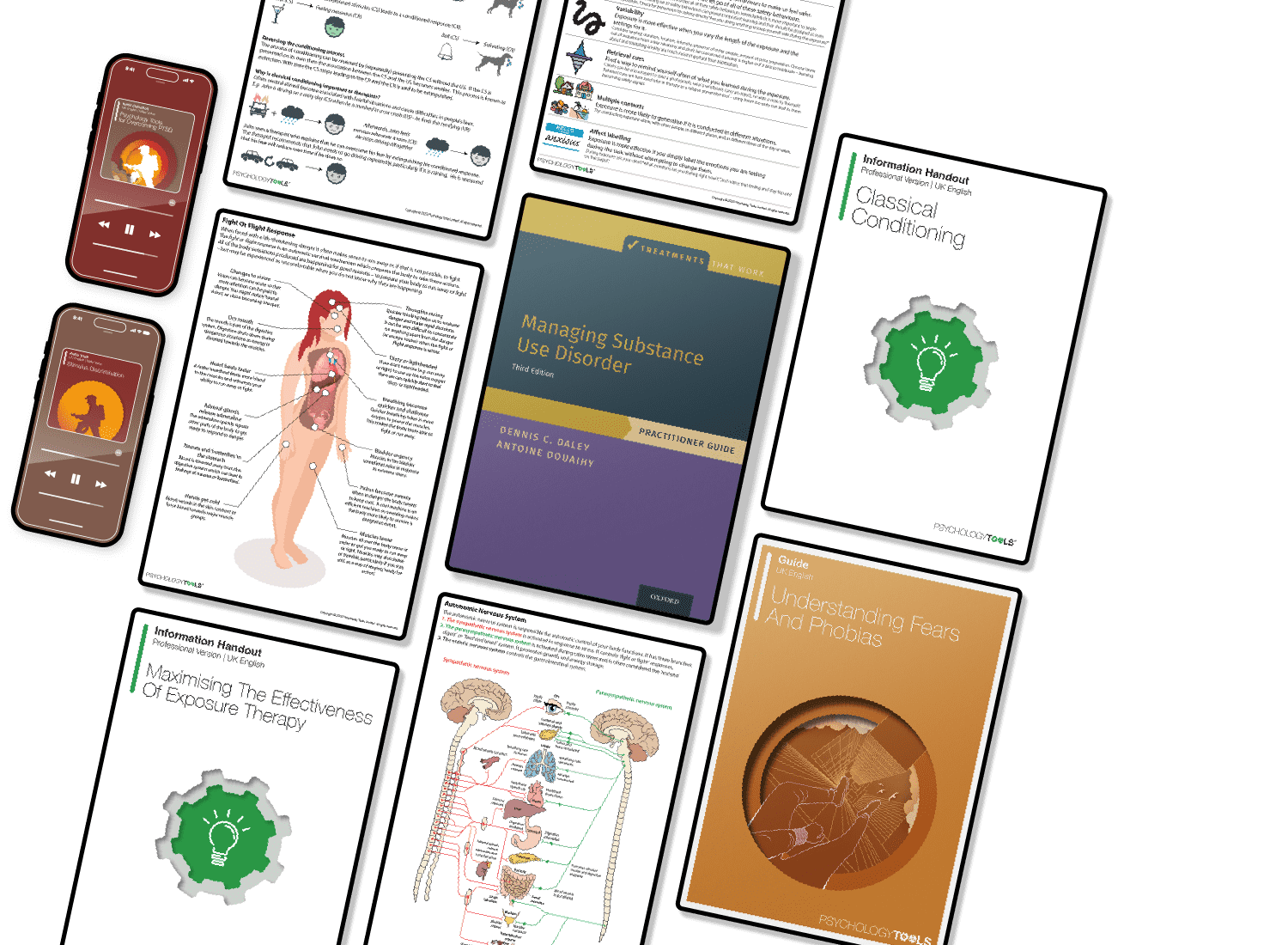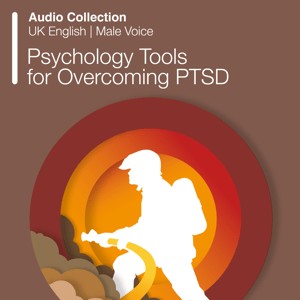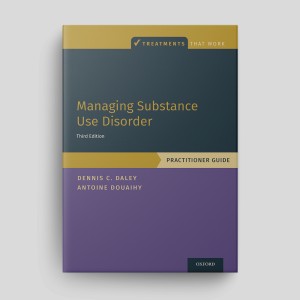Conditioning (Classical and Operant)
Learning theories propose that behaviors (B) are controlled by their context. Context arising before an instance of the behavior is described as the antecedents (A), and context occurring after the instance of a behavior are described as the consequences (C). Behaviors can be voluntary (e.g., escaping from a situation) or might be involuntary (e.g., an increase in heart rate), or they can be thoughts, emotions, or mental events (e.g., counting in my mind as a form of distraction).
Three major learning theories of relevance to therapists are:
Three major learning theories of relevance to therapists are:
- operant conditioning describes operant behavior which is controlled by consequences;
- respondent conditioning (also called classical conditioning or Pavlovian conditioning) describes respondent behavior that is controlled by antecedents;
- observational learning (vicarious learning) is defined as behavior that results from watching someone else’s behavior be rewarded or punished.

13 of 13 resources
Audio Collection: Psychology Tools For Overcoming PTSD
The Psychology Tools for Overcoming PTSD Audio Collection is designed for anyone with post-traumatic stress disorder (PTSD). This skills development p ...
https://www.psychologytools.com/resource/psychology-tools-for-overcoming-ptsd-audio-collection
Autonomic Nervous System
The autonomic nervous system (ANS) automatically regulates the function of body systems outside of voluntary control. The Autonomic Nervous System han ...
https://www.psychologytools.com/resource/autonomic-nervous-system
Balance
Our sense of balance is the result of a complex system which receives visual, vestibular, and proprioceptive inputs. This Balance client information h ...
https://www.psychologytools.com/resource/balance
Classical Conditioning
Classical conditioning is a process by which stimuli become associated with responses. This information handout describes key principles of Classical ...
https://www.psychologytools.com/resource/classical-conditioning
Coercive Methods For Enforcing Compliance
Individuals who have experienced abuse often focus on their own actions (or inactions) and blame themselves for their own abuse. This client informati ...
https://www.psychologytools.com/resource/coercive-methods-for-enforcing-compliance
Fight Or Flight Response
The fight or flight response is an automatic physiological reaction to an event that is perceived as stressful or frightening. The perception of threa ...
https://www.psychologytools.com/resource/fight-or-flight-response
Managing Substance Use Disorder (Third Edition): Practitioner Guide
Managing Substance Use Disorder comes in two volumes. This page is for the Practitioner Guide. Click on the following link to access the Workbook.&nbs ...
https://www.psychologytools.com/resource/managing-substance-use-disorder-practitioner-guide
Maximizing The Effectiveness Of Exposure Therapy
Despite its position as the leading treatment technique for anxiety disorders, not all clients respond to exposure therapy and some individuals relaps ...
https://www.psychologytools.com/resource/maximizing-the-effectiveness-of-exposure-therapy
Operant Conditioning
Operant conditioning / instrumental learning is a mechanism by which behaviors can be strengthened or weakened over time. This information handout des ...
https://www.psychologytools.com/resource/operant-conditioning
Process Focused Case Formulation
The Process-Focused Case Formulation encourages clinicians to make hypotheses regarding mechanisms or processes which they believe may be maintainin ...
https://www.psychologytools.com/resource/process-focused-case-formulation
Stimulus Discrimination (Audio)
The Stimulus Discrimination audio exercise is taken from the Psychology Tools For Overcoming PTSD Audio Collection. It is designed to help people with ...
https://www.psychologytools.com/resource/stimulus-discrimination-audio
Understanding Fears And Phobias
Our ‘Understanding…’ series is a collection of psychoeducation guides for common mental health conditions. Friendly and explanatory, they are co ...
https://www.psychologytools.com/resource/understanding-fears-and-phobias
What Is Memory?
Like other aspects of cognition, transient difficulties with memory can be caused by stress or fatigue and there is a documented decline in memory fun ...
https://www.psychologytools.com/resource/what-is-memory
Links to external resources
Psychology Tools makes every effort to check external links and review their content. However, we are not responsible for the quality or content of external links and cannot guarantee that these links will work all of the time.
Information (Professional)
- What are positive strategies for supporting behavior improvement? | Autism Speaks | 2012
- Use of reinforcement in behavior management strategies | Wright, Cook, Morton
Presentations
- Decreasing problematic behavior through schedules of reinforcement | Fouché
Treatment Guide
- Evidence-based practices for improving challenging behaviors of students with severe disabilities | Westling | 2015
Recommended Reading
- Rachman, S. (1977). The conditioning theory of fear acquisition: a critical examination. Behaviour Research and Therapy, 15, 375-387
What Is Conditioning?
Disorders That May Be Maintained by Conditioning
Behavioral approaches can be used to understand behavioral components of every condition.
Helpful Questions for Assessing Conditioning
Functional analysis is the traditional way of assessing the antecedents and consequences associated with a behavior.
Questions to investigate context/antecedents:
- When did the behavior occur?
- What were you doing?
- Who were you with?
- What were you feeling emotionally just before you acted that way?
- What body sensations were you aware of?
- What were you saying to yourself?
Questions to investigate the behavior-of-interest:
- What were you doing?
- What feelings were you having?
- What thoughts were you having?
- What were you saying to yourself?
Questions to investigate consequences:
- What happened after you acted that way?
- How did you feel? What emotions did you feel?
- How did other people respond?
- What effect did that have on the chances of this situation happening again?
Treatment Approaches Related to Conditioning
Treatment approaches stemming from a behavioral/conditioning approach might include:
- making changes to the antecedents/setting conditions. For example, if a patient with trichotillomania pulls her hair more when she is alone in her room she might be encouraged to seek company, spend less time alone;
- changing the contingencies. For example, if a child has a temper tantrum that results in him getting his own way, his parents might be encouraged to respond to the tantrum by removing their attention, and no longer reinforcing the tantrum behavior. If the conditioned stimulus (CS) is repeatedly presented without the unconditioned stimulus (UCS) the behavior is extinguished;
- counterconditioning is a technique which is used in aversion therapy. In counterconditioning a CS is paired to a UCS that elicits a new response which is incompatible with the old one.
References
- Persons, J. B. (2008). The case formulation approach to cognitive-behavior therapy. New York: Guilford Press.












